In this video, we’ll be showing you how to make a Mumbai K2 Cocktail, a delicious and unique cocktail made with Mumbai’s local Kala Khatta syrup. This sweet and tangy syrup is made from black grapes and is often enjoyed as a refreshing summer drink in Mumbai. Follow along as we teach you how to make this delicious cocktail step-by-step, and impress your friends with your mixology skills. So, what are you waiting for? Grab your ingredients and start mixing up your very own Mumbai K2 cocktail today! Don’t forget to subscribe to our channel for more exciting cocktail recipes.
Author Archives: Sanchit Mishra

‘The Youth will be finished’
Supreme Court on illicit liquor related deaths
• Spurious liquor claims over 50 lives in Bihar
• Bihar Chief Minister says no compensation to families of victims
• Supreme Court pulls up Punjab Government for illicit liquor trade
Illicit liquor deaths in India are not uncommon. The 50 plus deaths in Bihar due to consumption of spurious liquor has sparked off a debate on prohibition too, vigilance, affordability etc. The stance taken by the Bihar Chief Minister, Nitish Kumar that ‘jo piyega, woh marega’ has been criticised by the opposition saying that instead of cracking down heavily on those manufacturing spurious liquor, the Chief Minister is taking a high moral stance.

Not just the youth will be finished, but all those who consume illicit liquor will end up in a mess. Even while the Supreme Court made the remark recently on the flourishing illicit liquor trade in Punjab, in Bihar, where prohibition is in place, the death toll due to consumption of illicit liquor had crossed 50 at the time of writing. The deaths were reported from Saran district.
The Chief Minister of Bihar, Nitish Kumar is obstinate about continuing prohibition, despite the frequency of deaths due to illicit liquor. He said in Hindi ‘Jo piyega, woh marega’ (one who drinks, will die) and added that prohibition had helped so many families. The Chief Minister categorically stated that no compensation would be paid to the families of those who had died in the liquor tragedy.
To boot Bihar has a Minister for Prohibition and Excise, Sunil Kumar who dismissed the tragedy, stating that “Rumours are being spread by some political parties or people with vested personal or political interest that hooch tragedies are happening in the state because of prohibition. We want to clarify that hooch incidents have no relation with the ban on liquor.”

The Chief Minister said, “Even when there was no liquor ban here, people died due to spurious liquor – even in other states. People should be alert. As there is a liquor ban here, something spurious will be sold due to which people die. Liquor is bad and shouldn’t be consumed.”
Prohibition gives room for illicit trade
Deaths due to consumption of illicit liquor is a common phenomenon in Bihar and elsewhere too, but the governments are turning a blind eye to the situation. Earlier in March this year, 42 persons died and in 2021 the number of deaths reported due to illicit liquor consumption was 95 in Bihar. It was in 2016, Nitish Kumar who has been Chief Minister for seven times, introduced prohibition, taking a high moral ground and termed all those who drink as ‘mahapaapis’ (great sinners) and ‘not Hindustani’ which as head of state did not augur well for a trade which, besides adding to most State coffers, has evolved itself with great responsibility and sophistication. Yes, there are black sheep that run the illicit trade, which can be weeded out jointly by the industry and regulators.
The tragedy has led to war of words and the opposition, particularly BJP, has got a handle to drub the government on how prohibition has not only failed, but also led to rise in illicit liquor trade. The Union Minister for Panchayati Raj Giriraj Singh has urged Nitish Kumar to reconsider the prohibition policy, claiming that it has failed in checking illegal sale of spurious liquor, resulting in frequent deaths, and a rise in crime linked to it.
Last year alone from January 2021 to October 2021, the Bihar government registered a total of 49,900 cases in different districts after conducting special raids under the State Prohibition and Excise (Amendment) Act-2018. It seized a total of 38,72,645 litres of illicit liquor. The Bihar Police in an official statement had mentioned that a total of 12,93,229 litres of country liquor and 25,79,415 litres of foreign liquor was recovered and confiscated in the state.
During the operation, 62,140 accused were arrested and 12,200 vehicles were confiscated. Of the total accused, 1,590 people arrested did not belong to the state. The five districts, which were on top in terms of liquor seizure were Vaishali with 45,63,59 litres of liquor, Patna with 35,00,85 litres, Muzaffarpur with 25,64,80 litres, Aurangabad with 23,25,42 litres and Madhubani with 22,37,67 litres. The five districts, which were on top in terms of arrests are Patna with 6855 arrests, followed by Saran (3872), Motihari (2832), Nawada (2814) and Muzaffarpur (2660). With mounting opposition, the Bihar Chief Minister has asked his officials to arrest the ‘big fish’ involved in manufacture of spurious liquor.
Nearly 4 lakh violators languishing in jails
As per media reports from Bihar, nearly 4 lakh people have been arrested under the prohibition law since April 2016, leading to crowded jails and courts which are stressed dealing with such cases. Most of those arrested are poor, unable to afford bail. Despite this, the illicit trade keeps attracting people into the network of clandestine trade.
With so many arrests and many of them languishing jails, while the big fish go scot-free, the Nitish Kumar government has proposed amendment to the Bihar Prohibition and Excise Act, 2016. The proposal is to give a ‘second chance’ to violators rather than punishing them straightaway.
Illegal ‘bhattis’ keep mushrooming
Bihar, Gujarat, Mizoram and Nagaland are the states where prohibition is in force and deaths due to illicit liquor consumption is not surprising. And Punjab where liquor consumption is high, illicit liquor trade is thriving and the Supreme Court recently castigated the government on how such trade was destroying the social fabric. A bench of justices M R Shah and C T Ravikumar asked the Punjab government to spell out specific steps taken to curb the production and sale of illegal liquor. Senior advocate Ajit Kumar Sinha, appearing for the Punjab government, assured the court that the state is taking action and had already destroyed over 13,000 illegal liquor ‘bhattis’ (distilleries).
“We are not concerned with A government or B government. So far as Punjab is concerned, the drugs problem is increasing. The youth will be finished. It is very unfortunate that this is happening. Who is the sufferer? The poor people. Illegal manufacture and transportation have to stop because it ultimately affects the health and the society,” the court observed.
36,000 FIRs registered in Punjab in two years
The top court was hearing a plea arising out of a September 2020 order of the Punjab and Haryana High Court that had disposed of a petition seeking transfer of some FIRs registered in Punjab in relation to distillation of spurious liquor, its sale and inter-state smuggling to the CBI. Sinha told the Supreme Court that over 36,000 FIRs had been registered in the last two years.

The bench pulled up the defence counsel stating “You (government) are only filing FIRs, but according to you in every gali and mohalla there is a ‘bhatti’.” “The state may also come out with a circular on effective investigation and enquiry…. that if any illegal bhatti is found, the concerned local police will be held responsible for not keeping a vigil,” the bench said. The apex court, which observed the poor were the worst sufferers of hooch tragedies, directed the Punjab Excise Department to apprise it about the particulars of certain FIRs that have been lodged.
The Punjab government’s excise department has filed an affidavit in the Supreme Court that it would introduce country liquor with an alcohol content of 40% as a ‘healthier alternative’ to illegally home-brewed liquor and spurious liquor. The Punjab government also told the court that an officer of the rank of Inspector General of Police would be deputed to investigate and monitor all cases registered under the Punjab Excise Act, 1914 and that circulars had been issued to all field units to ensure action against illegal liquor production and smuggling.
The petitioners had claimed in the high court that illegal distilleries and bottling plants mushroomed in the state where the liquor mafia continues to thrive. They also referred to the August 2020 hooch tragedy in Punjab where over 100 people had died owing to consumption of spurious liquor. There are hundreds of varieties of spurious liquor and they are sold under different names such as ‘Mahua’, ‘Narangi’, ‘Moonshine’, ‘Tarra’ etc. Most ‘bhattis’ make hooch using coarse Jaggery, local yeast extracted from plants, citrus peels from oranges, sweet lime, etc., and other fruits like wild berries, pears, apricot, peaches, water, methanol etc. are used. Further, it is reported that they add organic waste, dead rodents, lizards and battery acid to make it more potent.
782 deaths in India in 2021
Last year, India registered a total of 708 incidents of consumption of illicit/spurious liquor causing 782 deaths. The maximum such deaths were reported from Uttar Pradesh (137), followed by Punjab (127); Madhya Pradesh (108) and Karnataka (104). The problem is more of spurious liquor. However, industry experts believe that prohibition aids illicit liquor trade, but add that unless governments deal with a firm hand such trade, deaths are going to continue, prohibition or no prohibition. The contention of the industry is that by lifting prohibition, consumers are spoilt for choice and that in a way can bring down casualties.
Illicit liquor trade is big not just in India, but in many countries due to the moolah it brings in for those indulging in it. As per a report, the ASEAN countries are forecast to have the highest consumption of unrecorded alcohol by 2025. “Illicit alcohol accounts for 90% of the alcohol market in Indonesia and 85% of the market in Vietnam.
– R. Chandrakanth
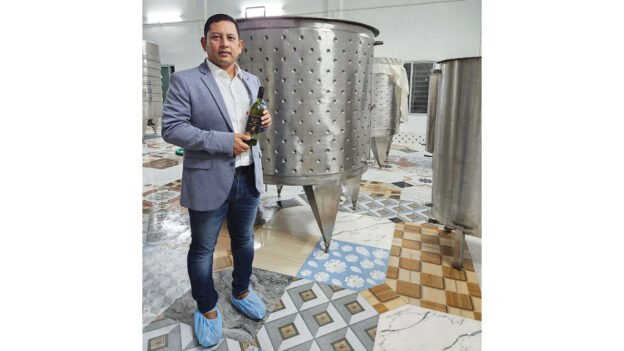
Assam’s Rice Wine Goes Global with Entrepreneur’s Vision
The sweet mild flavour doesn’t easily give it away; a taste so distinct and broad at the same time. First time drinkers find it hard to describe, for its aroma is more “vinegarish” than alcoholic. But in places where this drink is more of a traditional staple, rice wine means more than just a drink. For perspective, South Asians love their rice wine. And if you’ve been around a lot, you’ve probably heard of Sake, the iconic Japanese brew with a global reputation. In many other countries like China, South Korea, Thailand, Malaysia, and Indonesia, rice wine comes in different forms, recipes, and flavours.
India also has a rich history of rice wine. In Assam, the North-eastern part of the nation, there is a booming rice wine segment that is centuries old, with each tribe and ethnicity having its own unique taste. Communities such as Bodo and Ahom significantly use the glutinous rice, the Karbi, Mishing and Rabha tribes use non-glutinous rice. Although the differences seem to be minor, yet these subtle variations and adaptations do bring about significant differences in the quality and characteristics of the rice wine. Whether it’s Xaj Pani by the Ahom tribe, Apong in Mishing, Jou in Bodo, Karbi’s Hor, or Rabha’s Chako, one line that runs through is the fact that these rice wines are part of the social, economic, and traditional life of the people. With regional support now received and policy reforms in place, local producers are now taking advantage of the new policy environment to produce these heritage alcoholic beverages for all.
When the North-East Agro Products and Services (NEAPS) approached the Assam Agricultural University months ago to develop a rice brew technology for them, it was in line with the new mandate to grow the local industry. Today, the Jorhat-based company has launched its commercial brand, “XAJ”, its own version of Xaj Pani, the Ahom variant of rice wine. But for Akash Jyoti Gogoi, director of NEAPS, it was an ambition first nursed in 2014. “I had visited South Korea at the time and had a taste of Makgeolli, a popular rice wine in the country, and I realised that our own Xaj Pani tasted better.
“I then intentionally searched out other popular rice wines of South East Asian origin, such as the Sake of Japan and Lao Lao of Laos. I again felt that taste-wise, our Xaj Pani can be the winner. Moreover, Xaj Pani is 100% herbal in preparation. Thus, I decided to go commercial with Xaj,” says Gogoi.
Starting out in strange waters
Flanked by his wife, Mampi Gogoi and his cousin Uttam Chetia of Indian Institute of Technology Bombay, Gogoi set out to carve a niche for XAJ. A total of ₹3.5 crore formed the initial investment for the business, part of which was a ₹65 lac machinery loan from the government of India’s North East Centre for Technology Application & Reach (NECTAR) programme. Since inception, NEAPS has continued to work towards building capacity and growing its reach in the market. Thanks to the Heritage Liquor Bill of Assam, they’re able to sell XAJ in departmental stores, grocery stores, and restaurants across the state after procuring their Heritage Liquor Retailer License.
Although rice wine is a local craft in Assam, Gogoi needed to brush up on his skills. As he says, the process is both scientific and artistic. “The starter cake is made traditionally using local herbs with rich medicinal value. Then the sticky rice is cooked, before mixing it with the starter cake and kept for 24-36 hours. After that the rice is sifted to the fermenter tank and left for 14-16 days before the wine is extracted. Then the wine is filtered in a 3-tier filtration system, before it is filled in 750 ml bottles,” he reveals.
“XAJ has a shelf life of more than two years. The alcohol content is 12%-13% V/V, as per the government guidelines. We also intend to introduce the 375 ml bottle very soon,” he reveals.
Starting off production just two months ago, the company currently produces about 25% of its full capacity. What NEAPS has been able to do in the last few months is to take a complete rural product and transform it into a scientifically stable product. Now with a standard operating procedure (SOP), a process technology, and process machineries and equipment, Gogoi says upgrading its design is the next task for the brand. XAJ offers a unique smoky flavour, herbal value, and a sense of heritage which have been well received so far.
Educating us about the cultural background of this drink, Assam’s Tinsukia-based Sanjeev Konwar belonging to the Ahom community, says that the Ahoms possess an age-old tradition of offering Xaj Pani to their forefathers to please them and seek their blessings. “In special ceremonies held during childbirth, marriage, and even funeral, Xaj Pani is a primary element. Besides, Xaj is also prepared during Bihu and served as a welcome drink to guests. It is naturally loaded with a variety of probiotics and has great therapeutic values. There are even many folk songs centred around Xaj,” he explains.
A promising XAJ future
Indeed, rice alcoholic beverages present a lot of prospects for brands that invest in technology and innovation. For NEAPS, the plan is to go beyond Assam and move into the major cities of India. But beyond that, the goal for Gogoi is to export XAJ to other countries in South East Asia and Europe, so that they can have a feel of what real rice wine tastes like. And just like Judima (rice wine of Dimasa tribe), which has earned a Geographic Indication tag and put the global spotlight on Assam, the plan is to make XAJ an Assamese identity and tourist attraction.
Jamun Dry Gin Exclusive First Review
Jamun Dry Gin is a new player in the Indian gin market, brought to you by the renowned distillery, Mohan Meakins. With a rich history in producing iconic drinks like Old Monk Rum and Solan Gold single malt, Jamun Dry Gin marks their debut in the gin industry. At a price of Rs. 2100, this gin promises to be a fine blend of unique flavors, carefully crafted with the expertise of the Mohan Meakins team. In this article, we will dive into the details of Jamun Dry Gin, exploring its unique characteristics, taste, and more, so that you can decide if this gin is worth trying.
As the Indian gin market continues to grow, with numerous local brands emerging in recent years, Jamun Dry Gin stands out as a unique offering from Mohan Meakins, the producers of Old Monk Rum and Solan Gold single malt. With its roots in the Himalayan region, Jamun Dry Gin features juniper berries in its recipe, setting it apart from other gins in the market. Currently available in several Indian states, including Himachal Pradesh, Chandigarh, and Uttar Pradesh, as well as for export, Jamun Dry Gin is poised for expansion in the coming year with plans to reach even more Indian states, including Goa, Arunachal Pradesh, and Meghalaya.
The name “Jamun” may be a bit misleading, as some may think it refers to a flavoured gin. But in reality, “Jamun” is a term sometimes used to refer to juniper berries, which are one of the unique ingredients in this gin. Among the many gins available in India, only a handful use juniper from the Himalayas, making Jamun Dry Gin a standout product in the market.
The introduction of Jamun Dry Gin has created a stir in the Indian gin market, which has seen a surge in the number of locally produced gins in recent years. This gin, produced by Mohan Meakins, the makers of Old Monk Rum and Solan Gold single malt, is bottled at the Solan Brewery using Himalayan spring water, giving it a unique and unparalleled taste. The gin is named after the Juniper berries that are used in its production, and the Himalayan spring water adds to its distinctiveness, much like the single malts from the region that are known for their special taste due to the water used. The Kasauli Distillery, located in Shimla, is one of the oldest distilleries in India and is known for its high-quality products. In this article, we will take a closer look at the taste and characteristics of Jamun Dry Gin.
According to Hemant Mohan, the creator of Jamun Dry Gin, the gin is carefully crafted through a process of maceration and distillation. The neutral spirit and botanicals are distilled in a special copper pot still, resulting in a smooth and flavourful full-bodied gin. To ensure the perfect balance of flavours, the distillate is slowly reduced to bottling strength over the course of a month, creating a marrying period that allows the botanicals and spices to seamlessly integrate into the gin.
Packaging
The design of the bottle for Jamun Dry Gin is a classic gin bottle, but with a unique touch of deep purple gradient, paying homage to the key ingredient, the juniper berry. While many gin brands proudly display information about the botanicals used, this gin’s focus is on its key differentiator, the Himalayan spring water, which is sourced from an elevation of 6000 feet. The water is carefully sourced and used to create a smooth and flavourful gin that is sure to impress even the most discerning gin connoisseur.
Tasting and Nosing
When nosing the Jamun Dry Gin, you will be struck by the fresh aroma of the botanicals, including coriander, mint, lemon peel, and citrus. This creates a refreshing, invigorating scent that will leave you eager to taste the gin.
In terms of tasting, the gin immediately notices the zesty flavour of citrus and lemon peel, followed by a subtle sweetness that tastes like orange. The finish is marked by a touch of spice, which adds a delightful warmth to the throat. The gin’s balance on the palette is remarkable, and the credit for this goes to the use of Himalayan spring water. This special ingredient adds a smooth, almost magical quality to the gin that you’ll have to taste for yourself to fully appreciate.
Conclusion
In conclusion, Jamun Dry Gin marks Mohan Meakins’ debut in the gin market, and it’s a noteworthy one. The unique flavour profile of this gin is attributed to the Himalayan spring water used in its production. The gin provides a delightful balance of citrus, botanical and fresh flavors, making it a must-try for gin enthusiasts in India. At a price point of ₹2100, Jamun Dry Gin is definitely worth trying, especially with the growing gin market in India.
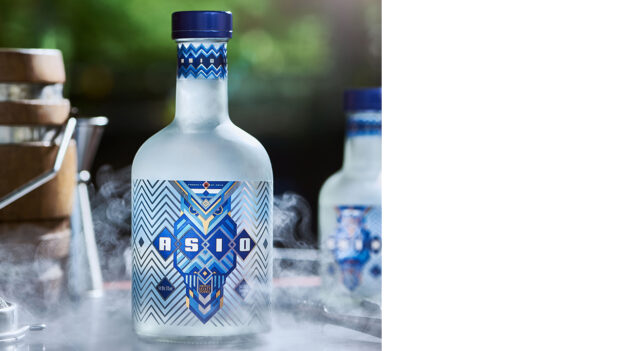
KALS launches Asio Vodka
With the vodka market on the upturn, KALS has launched their new Indian Made Vodka, Asio Vodka in the Tamil Nadu market. The vodka is triple distilled from a blend of different grains and filtered one time through seven columns of environmentally sustainable charcoal for a pure tasting smooth spirit.
The bottle is available in three sizes, that is the standard 750 ml, 375ml and the 180 ml. The ideology behind Asio was unique and KALS wanted to create something that provides a great experience to the consumer. In order to create that experience, they created a story that revolves around India. KALS states that no spirit brand truly embodies the spirit of India – and building this story right was their goal.
The company also hosted curated experiences for the consumers in small batches to sample the product. The taste and experience were then adapted to suit the consumer’s palate, whilst retaining the essence of the brand. KALS says that it has been receiving a great response so far. Currently Asio is available in the TN market and there are plans to make it available pan India soon.
The company is looking to develop more sustainable and lucrative brands moving forward. Together with the Brand Union they’ve embarked on a rebrand strategy to transform their products for the next generation of KALS fans. And the strategy with Asio is also similar to that of the other products, which is to ensure market penetration, increase sales of existing products or services on existing markets, and thus to increase our market share. This combined with market development, product development and diversification are part of the key growth strategies for Asio and KALS.
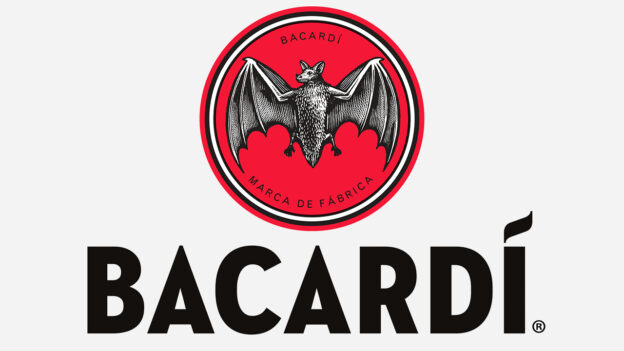
Bacardi bullish about the company’s prospects in India over the next decade
The Art of Botanicals experience aims to open dialogue and provoke thought around finding creative and inspiring ways to move towards a more sustainable way of living. For this, they have collaborated with Herbivore Farms – an urban farm for flavourful, nutritious & pesticide-free produce. In their endeavour to #StirCreativity through sustainability, Bombay Sapphire Creative Lab presents “The Art of Botanicals” in association with Herbivore Farms. Zeenah Vilcassim, Marketing Director, Bacardi India, elaborates on her role in growing the Bacardi Indian Business and the focus on premium spirits.

What has been your experience after taking over in your new position?
I am an economist and data analyst by training. Immediately after my training, I moved into a management consultancy role at Ernst & Young in investment banking. Things kept getting interesting as I gained experience across different industries, moving to more creative spaces such as media, content, digital marketing, partnerships, and consumer insights – before becoming the Dewar’s Global Brand Director at Bacardi. This varied set of experiences coupled with my whisky knowledge – and we all know India is a whisky market – has really helped me navigate the complex environment that is India. Whilst it’s not without challenges, I believe India is one of the most exciting consumer markets in the world. Economic indicators are on the rise, and India is one of the fastest growing spirits markets with a diverse set of consumers that are becoming more and more educated about premium spirits. The next ten years of Bacardi and the whole industry will be hugely shaped and influenced by India and I’m thrilled to be a part of that journey.
Which of the brands in the Bacardi portfolio excite you and will these be the focus of your marketing initiatives?
We are firmly focussed on premium spirits, and you will know that both brown and white spirits play a big part on our Best 10 strategy – a strategy we put in place in 2018 for the growth of the Indian business 5x by 2030. We will drive our core brands like Bacardi, but will also continue to push the new premium aged range Bacardi Reserva. We will continue our market leadership with Grey Goose and launch new innovations for Bombay Sapphire. We will drive a strong whisky portfolio with our newly launched Premium Indian Whisky: Legacy, in addition to William Lawsons, Dewar’s Premium, and our beloved single Malts Aberfeldy and Royal Brackla. But we will also work towards being at the forefront of growing categories like premium tequila with Patron and new innovations coming into the market that are relevant to the Indian consumer. The future is looking very bright for all our brands, and we will always keep our consumer at the heart and innovate and grow based on their preferences and needs.
How well placed is Bombay Sapphire in the Global and Indian gin market?
Bombay Sapphire is no.1 in the premium and above gin category in India and globally, we are the market leaders in international spirits with Bombay Sapphire. In addition to our iconic blue bottle and our unique cold vapour infusion process, our mission is to be the world’s most sustainable gin. Now while it might seem like everyone is talking about sustainability at the moment, this is a mission we have been working on for over the last eight years. We launched our distillery in 2014 that runs on 100% renewable energy and has been awarded the carbon trust standard. All of our bottles are made from 100% recycled materials including the metal cap as well as the product labels which are made from paper approved by the Forestry Stewardship Council and we’ve worked on making every one of our botanicals 100% sustainably sourced throughout its supply chain. We are the only gin in the world that can claim that all its botanicals are 100% sustainably sourced. It’s our responsibility to take as much care about the farmers and their communities as we do about the botanicals they grow and harvest for Bombay Sapphire. Therefore, we have invested in sustainable farming practices across every single element of the supply chain for all our botanicals.
We will only work with suppliers who act responsibly and ensure a sustainable future for farmers, their communities, and the environment. Last year was when the last out of our 10 key botanicals was given the ‘For Life’ certification of sustainability. We have accomplished something in the space we only thought was a pipe dream 10 years ago.
We believe we are incredibly well placed to not just retain our market leadership position, but also to grow it further and India is a big part of that strategy. We know the craft gin revolution in India is well and truly here so in addition to our strong credible message around sustainability we will also continue to innovate with products that are relevant to the Indian consumer – the first of which is the Bombay Sapphire Sunset that we launched recently in Goa. Inspired by the warm glow of the setting sun in addition to our 10 key botanicals, Bombay Sunset consists of three new Botanicals – Indian White Cardamom, Indian Golden Turmeric, and Spanish Mandarin peel. It is a unique take on a premium gin and highly limited edition – once it’s done it’s done. But rest assure there will more innovations from Bombay Sapphire coming your way soon to the Indian market.
What was the Art of Botanicals event message for consumers besides being a fun event?
Bombay Sapphire’s brand positioning is all about fostering creative self-expression and this is critical to our core. We believe that we’re all actually born creative beings, but life beats it out of us and stop us from believing we are truly creative. As a brand Bombay Sapphire aims to inspire creativity in every aspect of life to every and any person around the world. This is emphasised and brought to life through our “Stir Creativity” platform, reminding the audience that creativity can be found anywhere and is an inherent part of every human being. This ties back into the versatility of Bombay Sapphire’s premium gin and how one can get creative with it anytime, anywhere.
The ‘Art of Botanicals’ experiential platform by Bombay Sapphire aims to showcase the many ways in which one can express themselves creatively while living consciously. Given Bombay Sapphire’s ten sustainably sourced botanicals, we simultaneously showcased this through innovative cocktails inspired by collaborators in the sustainability space across Mumbai and Bangalore. The “Art of Botanicals” platform is an immersive event that ties various experiences back into the key message of “creativity” and “sustainability” with collaborating brands such as Herbivore Farms (Mumbai) and Anand Malligavad (Bangalore).
What according to you is a sustainable marketing strategy?
Sustainability in business is the ability of an organisation to thrive over time in a way that protects and replenishes resources. We have always believed in communicating with our audience with empathy and listening closely to what our consumers have to say. Therefore, to be transparent with them across aspects such as the brand’s efforts towards sustainability, its ecosystem, and the way it functions, is imperative.
We have also committed to reviewing our global supply chain, with the aim of removing non-essential, non-recyclable single-use plastic and are currently reducing the use of PET bottles for select smaller SKU’s in India and moving to glass instead. As part of our overall efforts during F19, we also reduced our glass bottle weight and increased use of “Returnable Glass Bottles” which resulted in 1500 Metric tonnes of lesser Carbon emission and are working towards a plan to reduce it further by 20% resulting in a reduction in carbon emissions by 1800 Metric Tonnes.
What is the overall strategy for the promotion of your brands in the marketplace?
Our strategy has always been to invest in creating sustainable platforms and experiences across brands; creating greater impact and increased emphasis on cultural relevance year on year. Our brand campaigns have been at the forefront of popular culture, resonating with consumers across demographics. Being a brand that has been synonymous with identifying and popularising new cultural trends for over 157 years, we’ve been the first-movers in the creation of campaigns and experiences, inspired by alternative cultural trends, resulting in platforms like Bacardi NH7 Weekender, BREEZER Vivid Shuffle, Dewar’s You’ve Got Chef’d, and our latest Art of Botanicals platform.
Bacardi has generated immense love through platforms such as Bacardi NH7 Weekender, one of the most iconic, immersive music experiences that was one of the first platforms for alternative music and has seen over half a million consumers walk through the festival.
BREEZER Vivid Shuffle is India’s biggest Hip-Hop festival, which celebrates grassroots Indian hip-hop culture – built on Breezer’s commitment to champion and support youth sub-culture.
With a varied target group, each of our brands connect with consumers in their own unique way – Bacardi leverages its legacy in music, Bombay Sapphire speaks of a consumer’s creative expression, Breezer encourages the genre of hip-hop and dance subcultures, while Grey Goose elevates lifestyle.
We have worked with some of the most engaging and popular content creators and platforms to stay ahead of the curve. Overall, our innovative way of reaching out to audiences has resulted in content that has received over 100% increase in organic engagement as opposed to solely leveraging traditional models. All of this was followed by Bacardi India winning the award for the ‘Best Brand Extension Campaign of the Year’ at the Kalelido awards hosted by Brand Equity in March 2019 for the brand’s work on the ’Bacardi House Party Sessions’ campaign. Bacardi House Party Sessions had garnered an overall unique reach of 5M and drove 1.3M conversations on social media.
Are you looking at inorganic growth to become the market leader (Inorganic growth is through mergers and acquisitions/buying and selling companies)?
Because we also aim to keep our consumers at the heart by understanding their needs and preferences, we wouldn’t rule out any possibility. If the right opportunity presents itself, we will always look to deliver to our consumers, what makes sense to them and our firm commitment to being the number one premium spirits company.
Any new BII whisky launch in the pipeline?
With India being the largest whisky drinking nation that reflected an annual consumption reaching 220 million cases in 2019, the opportunity to expand in the Indian market has been tremendous. While we continue to premiumise our portfolio across categories like Dewar’s Premium and Double Double ranges as well as our single malts (Aberfeldy and Royal Brackla), we also recently announced our first-ever Premium India Whisky, Legacy.
India is one of the fastest growing markets for Bacardí globally, and the organisation is rapidly investing behind its strategic and ambitious vision for the market. The Indian whisky category is primed for the next stage of its evolution, and we saw this as the perfect opportunity to drive that shift forward. We have found our own way to take the category codes we know work and put a modern contemporary spin on them. Legacy Premium Indian whisky is proudly Indian and truly embodies the culture and passion of India. Legacy has now been introduced across shelves in Maharashtra, Telangana, and Uttar Pradesh with plans to expand into further markets in the coming months and years.

Legacy has been crafted with a one-of-a-kind blend that combines Indian and Scottish malts with Indian grains. A rich blend layered with subtle peaty notes, fruity notes, and undertones of toasted oaks with a whiff of spice and a delicate vanillic smoky finish, Bacardí has created an impeccably smooth yet perfectly balanced whisky for the Indian consumer.
This momentous launch in our companies’ history also demonstrates the true commitment Bacardi Global has been putting in, especially for India.
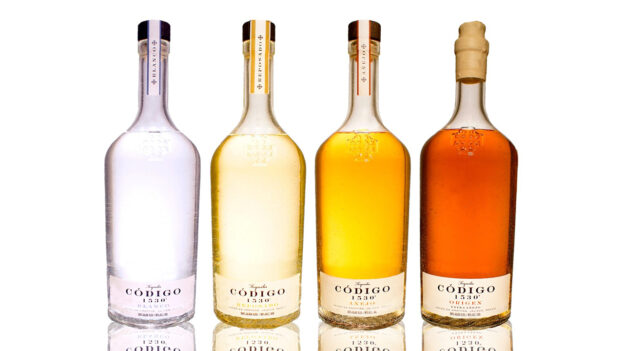
Pernod Ricard to acquire Código 1530 Ultra Premium and Prestige tequila
Pernod Ricard recently announced the signing of an agreement for the acquisition of a majority shareholding of Código 1530 Tequila, a range of Ultra-Premium and Prestige tequila. This new investment into the fast-growing agave category, mainly driven by the US market, complements the Group’s very comprehensive portfolio across price points and occasions.
Founded in 2016 by Ron Snyder, Federico Vaughan and George Strait, the story of Código 1530 tequila, produced in the Mexican state of Jalisco, is based on the transmission of an ancestral tequila recipe following Los Códigos, “the codes” in English. Código tequila has positioned itself within a very competitive category, thanks to the unique quality proposition of its range of Ultra-Premium (Blanco, Rosa and Reposado) and Prestige products (Añejo, Barrel Strength Añejo and Origen Extra Añejo).
Código is already available within 50 states across the US and is at the early stage of its international development with a presence in over 30 markets. Thanks to Pernod Ricard’s distribution expertise in ultra-premium & prestige brands and its successful experience in collaborating with entrepreneurs, Código is now poised to accelerate its global development and reach new consumers.
Through this partnership, Pernod Ricard is expanding and diversifying the value proposition of its portfolio of tequila brands, which already includes Olmeca, Altos and Avion. The Group is also adding two new Mezcal references (Código Mezcal Artisanal and Código Mezcal Ancestral) to its market leading Mezcal portfolio built around the Del Maguey and Ojo de Tigre brands. The strengthening of the agave portfolio follows the Group’s recent investment in the sotol category through its acquisition of a minority stake in the ultra-premium Nocheluna brand.
Alexandre Ricard, Chairman and CEO of Pernod Ricard, said, “Código’s range of exquisite tequilas reinforces our offer of Ultra Premium+ agave products in the US, where the category is enjoying a very strong momentum. It is a privilege to partner with Ron Snyder, Federico Vaughan and George Strait with whom we share a common vision for Código 1530 and common ambition to strongly accelerate and strengthen the success of the brand.”
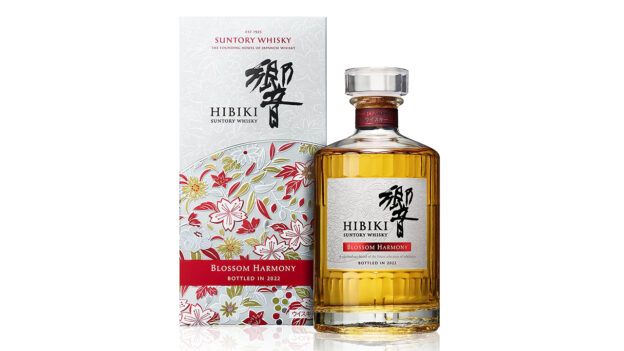
The House of Suntory Introduces Hibiki Blossom Harmony, a limited-edition blended whisky
The House of Suntory, the founding House of Japanese Whisky, recently announced the release of Hibiki Blossom Harmony, a limited-edition blend featuring whiskies finished in Sakura casks.
The Sakura Blossom season in early spring has always been an occasion for celebration in Japan, with many gathering around the beautiful flowering Sakura trees that inspire the Japanese to appreciate life as it blooms. Hibiki Blossom Harmony captures this joyful spirit by blending a rare selection of whiskies finished in Sakura wood casks with diverse matured malt and grain whiskies to create this particular Hibiki.
This limited-edition bottle will be available beginning in October in select global markets including in the United States, the United Kingdom, Australia, Germany, France, Spain, Austria, United Arab Emirates, Netherlands, Italy, Turkey, China, Hong Kong, Singapore, Taiwan, South Korea, Thailand and Vietnam. The expression is bottled at 43% ABV and has a suggested retail price of $160 USD.
Hibiki is a harmonious blend of various malt and grain whiskies from Suntory’s Yamazaki, Hakushu and Chita distilleries. Constantly pushing the boundaries of what Japanese Whisky can be, the House of Suntory continues to explore and experiment with various wood types. The Sakura cask was one that intrigued Fifth Generation Chief Blender Shinji Fukuyo.
“I have been mesmerised by the Sakura cask for the last five years now due to its symbolism, but also because of its distinctive, subtly floral and spicy aroma and flavour notes,” says Fukuyo. “There have been many experiments with malt and grain whisky components, and we found that there was a special alchemy between the grain whiskies and the Sakura cask. It is this special relationship – harmony – that inspired me to create this blend.”
Achieving the right balance and orchestration proved to be a great challenge from the start since the Sakura cask is one with strong character that can easily become overbearing. After a period of trial and error, Fukuyo found that the grain whiskies finished in the Sakura cask best elevated the overall balance, and the end result is a particularly distinctive expression of Hibiki. It begins with an enticing floral bouquet, followed by the signature Hibiki depth and complexity of honey, candied orange peel, jasmine and chocolatey decadence. The finish features surprising bittersweet spicy notes.
Meaning “Resonance” in Japanese, Hibiki embodies the Suntory philosophy ‘To Create Harmony with People and Nature’. As a House of Master Blenders, the House of Suntory has gone to great lengths to explore the breadth and depth of what Harmony can mean for a blend. Hibiki Blossom Harmony celebrates a particular kind of Harmony.
Finding Best Chakna feat Cocktails India | Dada Bartender
Tired of the same old chakna? Looking for something new and exciting? Look no further! In this video, we are going to take you on a culinary journey with Cocktails India (Baba Bartender) as we explore the best chakna for a whisky especially in Mumbai. From crunchy yellow banana chips to teekha gathiya, this is your one-stop guide to finding the perfect snack for any occasion!
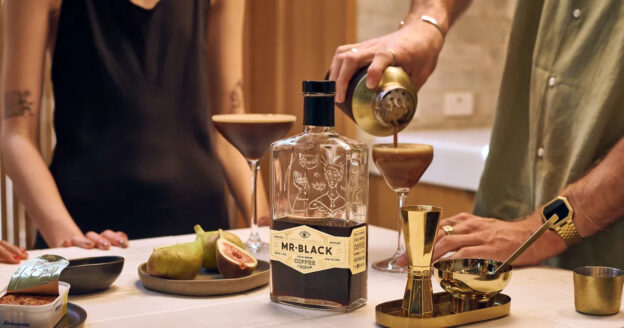
Diageo acquires premium cold brew coffee liqueur, Mr Black
Diageo recently announced that it has acquired Mr Black, the Australian premium cold brew coffee liqueur. Mr Black was launched in 2013, by designer Tom Baker and award-winning distiller, Philip Moore, with the vision of bringing the global coffee culture to the world of spirits and cocktails. Mr Black has grown to become the leading premium-priced coffee liqueur in the United States, applying modern coffee brewing techniques and quality sourcing to reinvigorate coffee cocktail culture and consumers’ desire for premium coffee cocktails, such as the espresso martini and coffee old fashioned.
Over the last five years, Mr Black has been the fastest growing brand in the global coffee liqueur category. Now available in 22 countries, the brand appeals to craft cocktail lovers and consumers seeking delicious tasting cocktails in bars and restaurants, and for indulgent, at-home occasions. Mr Black sources and roasts coffee to its own bespoke specification, creating the premium liqueur with a delicious and rich coffee taste.
In 2015, Diageo acquired a minority stake in Mr Black through Distill Ventures, the Diageo-backed accelerator programme. Distill Ventures receives funding from Diageo and works with the company to support entrepreneurs as they launch and grow innovative drinks brands.
Co-founder, Tom Baker, will remain actively involved with the brand, working with the Diageo team to build on Mr Black’s success.
Claudia Schubert, President, U.S. Spirits and Canada, Diageo said, “With its award-winning liquid, eye-catching design and packaging, and ability to thrive in culture, we believe Mr Black is just getting started in the dynamic coffee liqueur segment. This acquisition is in line with our strategy to acquire high growth brands in exciting categories, and we are delighted to welcome Mr Black into our portfolio.”
Tom Baker, Co-founder of Mr Black said, “Coffee is more than just a drink – it’s a culture, ritual, obsession, aesthetic, experience, tradition and a community.
